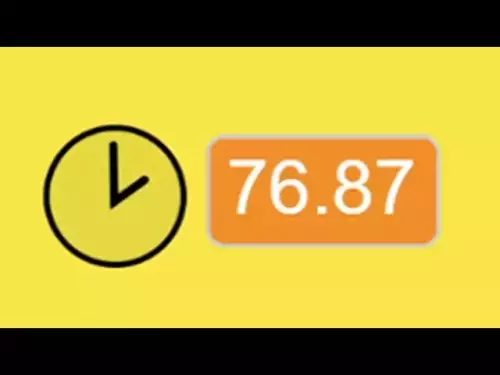-
 bitcoin
bitcoin $111227.426149 USD
0.83% -
 ethereum
ethereum $3938.517925 USD
1.92% -
 tether
tether $1.000218 USD
-0.01% -
 bnb
bnb $1109.592915 USD
-1.92% -
 xrp
xrp $2.556568 USD
6.88% -
 solana
solana $194.077070 USD
0.89% -
 usd-coin
usd-coin $1.000044 USD
0.00% -
 dogecoin
dogecoin $0.199530 USD
2.43% -
 tron
tron $0.298106 USD
-4.87% -
 cardano
cardano $0.658022 USD
2.41% -
 hyperliquid
hyperliquid $39.335685 USD
-1.30% -
 chainlink
chainlink $17.941690 USD
3.36% -
 ethena-usde
ethena-usde $0.999435 USD
0.00% -
 stellar
stellar $0.321633 USD
3.55% -
 bitcoin-cash
bitcoin-cash $506.068499 USD
5.36%
区块链中的第2层解决方案是什么?如何提高可扩展性?
Layer 2 blockchain solutions, like state channels and rollups, alleviate Layer 1 limitations by processing transactions off-chain, thus increasing throughput and reducing fees.
2025/03/03 05:36
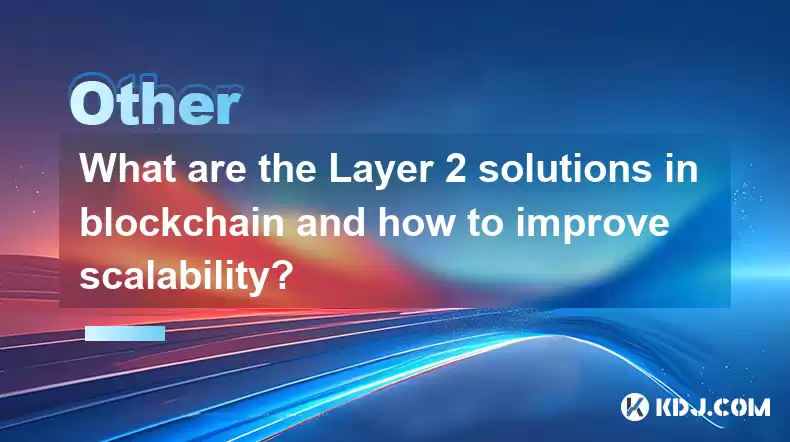
区块链中的第2层解决方案是什么?如何提高可扩展性?
要点:- 了解第1层以及对第2层的需求:第1层区块链(例如比特币和以太坊)处理区块链网络的核心功能。但是,它们在交易吞吐量和处理速度方面的固有局限性通常会导致高交易费用和网络拥塞。第2层解决方案旨在通过将某些交易处理从主链中移出来解决这些可扩展性问题。
- 第2层解决方案的类型:我们将探索几个突出的第2层缩放解决方案,包括状态通道,汇总(乐观和ZK-SNARKS),SIDECHAINS和等离子体。每种都提供了一种不同的方法,可以在安全性,权力下放和复杂性方面通过不同的权衡取舍。
- 通过第2层提高可伸缩性:我们将深入研究每个第2层解决方案背后的技术机制,并解释它们如何减轻主链的负担,并最终增加交易吞吐量并减少费用。我们还将讨论第2层空间内的正在进行的发展和创新。
- 选择右第2层解决方案:最佳层2解决方案取决于特定的需求和优先级。要考虑的因素包括所需的安全级别,所需的权力下放水平,实施的复杂性以及所支持的应用程序的类型。
- 州渠道:
想象一群想在自己之间反复交易的人。他们可以打开状态渠道,而不是将每笔交易广播到整个网络(在第1层昂贵且缓慢)。该渠道的作用就像是私人脱链分类帐,参与者之间记录了交易。只有通道的最终状态(所有交易的净结果)才写入第1层区块链。这大大减少了主链的负载。该过程涉及多个步骤:
* **Channel Opening:** Participants agree to open a state channel and deposit funds into a multi-signature smart contract on the Layer 1 blockchain. This contract acts as an escrow, holding the funds until the channel is closed. The initial state of the channel is recorded, showing the initial balances of each participant. This requires a Layer 1 transaction, but it's a one-time cost. The smart contract's code is carefully audited to ensure its security and correctness, mitigating the risk of fraud. The selection of participants is crucial, and the initial state must be meticulously verified by all parties involved. The security of the entire channel relies on the correctness of the smart contract and the honest participation of all parties. Any vulnerabilities in the smart contract or malicious behavior by participants can compromise the security of the channel. The process also involves defining the rules and parameters of the channel, ensuring all participants agree on the terms of their interactions. The smart contract will enforce these rules, preventing any disputes that might arise due to ambiguous terms. A robust and well-defined set of rules is critical for the smooth and secure operation of the state channel. * **Transaction Processing:** Participants exchange funds within the channel by updating their shared state. These updates are not immediately broadcast to the main chain, significantly improving transaction speed and reducing fees. This off-chain processing allows for a high volume of transactions without burdening the main network. Each transaction is digitally signed by the participants to ensure authenticity and prevent unauthorized modifications. The use of cryptographic techniques guarantees the integrity and immutability of the transactions within the channel. The participants can use various methods to ensure the integrity of the channel, such as using a trusted execution environment or a secure multi-party computation protocol. This protects the transactions from tampering and ensures that only authorized participants can update the channel's state. * **Channel Closing:** Once the participants have finished transacting, they close the channel. The final state of the channel is broadcast to the Layer 1 blockchain as a single transaction. This transaction updates the balances of the participants on the main chain, reflecting the net result of all the off-chain transactions. The closing process involves submitting a signed transaction to the Layer 1 network. This transaction contains the final state of the channel, which is verified by the Layer 1 network. The verification process ensures the integrity of the channel and prevents any disputes about the final balances. The closing process might involve a waiting period to allow for challenges and dispute resolutions. Once the waiting period is over, the funds are released to the participants according to the final state of the channel.- 滚动(乐观和ZK-SNARKS):
汇总将多个交易捆绑到第1层的单个交易中。这大大减少了主链需要处理的单个交易数量。主要类型有两种:
* **Optimistic Rollups:** These assume that all transactions within a batch are valid unless proven otherwise. A "fraud proof" mechanism allows anyone to challenge a potentially invalid transaction within a specified time window. If a fraud is proven, the rollup is reverted. This mechanism relies on economic incentives to deter malicious actors from submitting fraudulent transactions. The longer the challenge period, the more secure the system, but it also means longer delays in finalizing transactions. The process involves several stages: * **Transaction Batching:** Transactions are collected off-chain into a batch. This batch is then submitted to the Layer 1 blockchain as a single transaction. The batch includes all the necessary information to reconstruct the transactions, such as the transaction data, the sender's addresses, and the receiver's addresses. The transaction data is usually encoded in a compact format to reduce the size of the batch. This process is optimized to minimize the size of the batch and reduce the gas costs associated with submitting the batch to the Layer 1 blockchain. A key aspect of this process is ensuring the security and integrity of the transaction batch. This is achieved through cryptographic techniques and validation mechanisms to prevent malicious actors from tampering with the batch. * **State Transition:** The rollup executes the transactions in the batch off-chain. This creates a new state root, which is a cryptographic hash representing the updated state of the rollup. The state root is then submitted to the Layer 1 blockchain as part of the transaction. The state transition process involves updating the balances of the accounts involved in the transactions. The process also involves verifying the validity of the transactions to ensure that they comply with the rules of the blockchain. Any invalid transactions are rejected, and the state transition is rolled back to the previous state. The state transition process is highly optimized to ensure that it can process a large number of transactions efficiently. * **Fraud Proof:** A challenge period is initiated, during which anyone can submit a fraud proof to challenge the validity of a transaction within the batch. If a fraud proof is provided, the rollup is reverted, and the fraudulent transaction is removed. The fraud proof mechanism relies on cryptographic techniques and consensus mechanisms to ensure the security and integrity of the system. The challenge period is typically set to a reasonable length to allow enough time for fraud proofs to be submitted, but it is also designed to prevent excessive delays in transaction finalization. The system provides incentives for individuals to participate in the fraud proof process, encouraging them to report fraudulent activities and maintain the integrity of the system. * **ZK-SNARK Rollups:** These use zero-knowledge proofs to prove the validity of transactions without revealing the transaction details. This provides greater privacy and faster finality compared to optimistic rollups, as there is no need for a challenge period. However, they are more complex to implement. * **Transaction Batching and Proof Generation:** Transactions are batched off-chain, and a succinct zero-knowledge proof is generated to attest to the validity of the entire batch. This proof is significantly smaller than the entire transaction data, allowing for efficient transmission to the Layer 1 blockchain. The process of generating zero-knowledge proofs involves complex cryptographic techniques, ensuring that the proof does not reveal any information about the transactions other than their validity. The computational cost of generating these proofs can be substantial, and the choice of cryptographic primitives is critical to balancing efficiency and security. The proof generation process is highly optimized to reduce the computational overhead and ensure the timely generation of proofs. * **Proof Verification on Layer 1:** The succinct zero-knowledge proof is submitted to the Layer 1 blockchain, along with the state root representing the updated state of the rollup. The Layer 1 network verifies the proof using a dedicated verifier contract. This verification process is significantly faster and cheaper than verifying each individual transaction. The verifier contract is carefully designed to ensure its security and efficiency. The verification process involves checking the validity of the proof and the consistency of the state root. The verifier contract only needs to process the small proof, rather than the entire batch of transactions, which significantly reduces the computational load on the Layer 1 blockchain. * **State Update:** Once the proof is verified, the Layer 1 blockchain updates its state according to the new state root, reflecting the outcome of the transactions in the batch. This process is atomic, meaning that either all transactions in the batch are applied, or none are. This ensures the consistency and integrity of the blockchain state. The state update process is highly optimized to ensure its efficiency and speed. The process also includes mechanisms to prevent race conditions and other potential issues that could compromise the integrity of the blockchain state.- Sidechains:
Sidechains是独立的区块链,将其固定在主链中。他们可以拥有自己的共识机制和参数,从而可以提高灵活性和可扩展性。但是,与主链相比,他们通常会牺牲一定程度的安全性和权力下放。使用Sidechains的过程涉及:
* **Pegging:** A secure mechanism is required to transfer assets between the main chain and the sidechain. This usually involves locking assets on the main chain and minting corresponding tokens on the sidechain, and vice-versa. This process ensures that the value of the assets is preserved across both chains. The security of the pegging mechanism is critical, as any vulnerabilities could lead to the loss of assets. The process often involves cryptographic techniques and multi-signature schemes to ensure the integrity and security of the transactions. The choice of cryptographic primitives is crucial to balancing security and efficiency. * **Transaction Processing:** Transactions are processed on the sidechain, taking advantage of its potentially higher throughput and lower fees. The sidechain can have its own consensus mechanism, allowing for faster transaction processing. The choice of consensus mechanism depends on the specific requirements of the sidechain, balancing factors such as security, decentralization, and throughput. Proof-of-stake and delegated proof-of-stake are popular choices for sidechains due to their efficiency and scalability. * **Data Availability:** The sidechain needs to provide a mechanism to ensure the availability of transaction data. This is crucial for ensuring that the transactions on the sidechain can be audited and verified. Different mechanisms can be used to ensure data availability, such as using a distributed hash table or a network of nodes. The choice of data availability mechanism depends on the specific requirements of the sidechain, balancing factors such as security, availability, and cost.- 等离子体:
等离子体是建造可扩展儿童区块链的框架,这些区块链由父链(通常是主链)固定。等离子体链可以独立处理交易,但父链充当争议的最终仲裁者。这种方法在可扩展性和安全性之间提供了平衡。实施涉及:
* **Child Chain Creation:** A child chain is created as a separate blockchain that operates independently from the main chain. This child chain can have its own consensus mechanism and parameters, allowing for higher throughput and lower fees. The creation process involves deploying a smart contract on the main chain that governs the rules and operations of the child chain. The smart contract is carefully audited to ensure its security and correctness. * **Transaction Processing:** Transactions are processed on the child chain, taking advantage of its potentially higher throughput and lower fees. The child chain can have its own consensus mechanism, allowing for faster transaction processing. The choice of consensus mechanism depends on the specific requirements of the child chain, balancing factors such as security, decentralization, and throughput. * **Exit Mechanism:** A mechanism is needed to allow users to withdraw their assets from the child chain to the main chain. This exit mechanism is crucial for ensuring that users can access their funds at any time. The exit mechanism usually involves a waiting period and a challenge period to allow for dispute resolution. The design of the exit mechanism is critical for balancing security and usability. A well-designed exit mechanism ensures that users can withdraw their funds quickly and securely without compromising the security of the system. The exit mechanism must be robust and resilient to attacks, and it must also be easy for users to understand and use.常见问题解答:问:第1层和第2层解决方案之间有什么区别?答:第1层是指基础区块链协议(例如,以太坊,比特币)。它处理核心功能,例如共识,安全和交易验证。第2层解决方案是在第1层顶部构建的,以通过将一些处理到外部网络来提高可扩展性。第1层仍然是安全性和最终结局的最终来源。
问:哪个第2层解决方案是最好的?答:没有单个“最佳”第2层解决方案。理想的选择取决于特定应用程序的需求,优先考虑安全性,权力下放,交易速度和复杂性等因素。乐观的汇总为许多应用提供了良好的平衡,而ZK-SNARKS则提供了更强的隐私和更快的终结性,但更为复杂。国家通道表现出色,可在小组之间进行频繁的交易,而侧chain则具有灵活性,但可能会损害权力下放。
问:2层解决方案如何提高可伸缩性?答:第2层解决方案通过处理交易后的链外交易来减轻第1层区块链的负担。这导致交易吞吐量增加,交通拥堵减少和交易费用下降。他们通过不同的机制,例如批处理交易(汇总),创建私人通道(状态通道)或使用单独的链(Sidechains和等离子体)来实现这一目标。
问:第2层解决方案是否安全?答:第2层解决方案的安全性取决于特定的实现和基础第1层安全性。尽管它们经常提高可扩展性,但它们可能会引入新的漏洞或依赖性。但是,许多第2层解决方案都结合了强大的安全机制,例如欺诈证明(乐观的汇总)或零知识证明(ZK-SNARKS),以保持高度的安全性。第1层区块链的安全性仍然是第2层解决方案总体安全性的关键因素。
问:第2层解决方案的局限性是什么?答:第2层解决方案不是灵丹妙药。他们可以从实施和用户体验方面引入复杂性。一些解决方案可能需要特定的技术专长来建立和管理。其他人可能会对他们可以处理的交易类型或他们可以提供的权力下放水平有局限性。此外,第2层解决方案的安全性通常取决于基础第1层区块链的安全性。第1层区块链的折衷可能会影响在其顶部构建的第2层解决方案的安全性。某些第2层解决方案的复杂性也可以使它们对普通用户的访问范围降低,从而可能限制其采用。最后,不同层解决方案之间的互操作性仍然是一个挑战,因为不同的解决方案可能使用不同的协议和标准。
这种详细的解释提供了加密货币空间中第2层缩放解决方案的全面概述。请记住,该领域在不断发展,并且不断开发新的解决方案和改进。
免责声明:info@kdj.com
所提供的信息并非交易建议。根据本文提供的信息进行的任何投资,kdj.com不承担任何责任。加密货币具有高波动性,强烈建议您深入研究后,谨慎投资!
如您认为本网站上使用的内容侵犯了您的版权,请立即联系我们(info@kdj.com),我们将及时删除。
- 埃塞克斯邮局、5 便士硬币和查尔斯国王:皇家造币厂的启示!
- 2025-10-23 10:30:16
- Waymo 的纽瓦克机场 AV 测试:Alphabet 的 AI 赌博得到了回报吗?
- 2025-10-23 10:30:16
- 查理王 5 便士硬币:您口袋里的同花大顺?
- 2025-10-23 10:35:18
- Solana、加密货币咨询和前沿行业:关于金融未来的纽约分钟
- 2025-10-23 08:51:22
- MAGACOIN:以太坊鲸鱼潜入 2025 年最热门的预售
- 2025-10-23 08:51:22
- 嘉手纳的路的尽头? KDA 代币因项目放弃而暴跌
- 2025-10-23 08:55:34
相关百科

什么是区块浏览器以及如何使用它?
2025-10-24 00:36:24
什么是区块浏览器? 1. 区块浏览器是一种基于网络的工具,允许用户实时查看和分析区块链网络上的数据。它的功能类似于区块链交易、地址、区块和其他链上活动的搜索引擎。 2. 每种主要加密货币,例如 Bitcoin 或以太坊,都有一个或多个专用的区块浏览器,例如 Blockchain.com、Ethers...
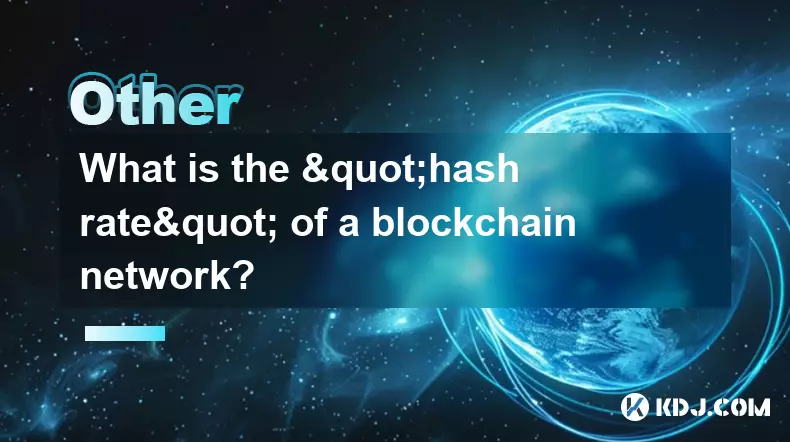
区块链网络的“哈希率”是多少?
2025-10-10 15:55:04
了解区块链网络中的哈希率1. 哈希率是指在区块链网络上用于处理交易和挖掘新区块的总计算能力,特别是那些利用工作量证明(PoW)共识机制的网络。它测量在解决验证交易所需的复杂加密难题时,采矿设备或网络每秒可以执行多少计算。 2. 较高的算力表明更多的矿工积极参与网络,贡献他们的计算资源来保护系统。这直...
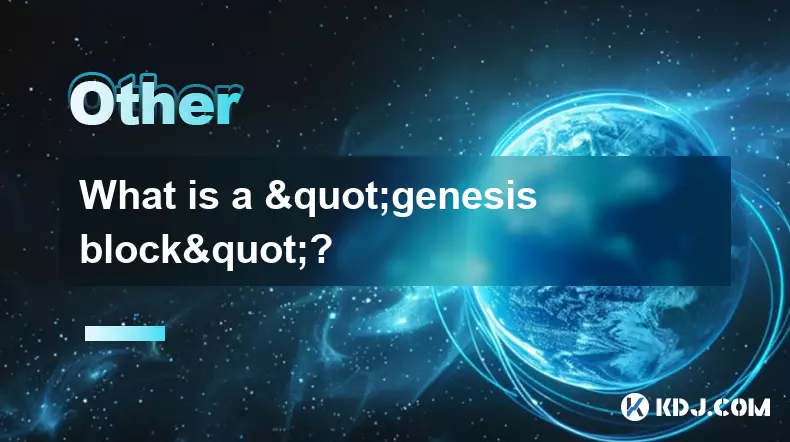
什么是“创世块”?
2025-10-15 19:55:08
了解加密货币中的创世块创世块是区块链网络中的第一个块。它是构建所有后续块的基础。与常规区块不同,创世区块不引用前一个区块,因为它没有前身。这种独特的特性使其成为整个链条不可改变的起点。创世区块的主要特点1.它被硬编码到大多数区块链系统的软件中,从一开始就确保所有节点的一致性。 2. 创世块的时间戳往...
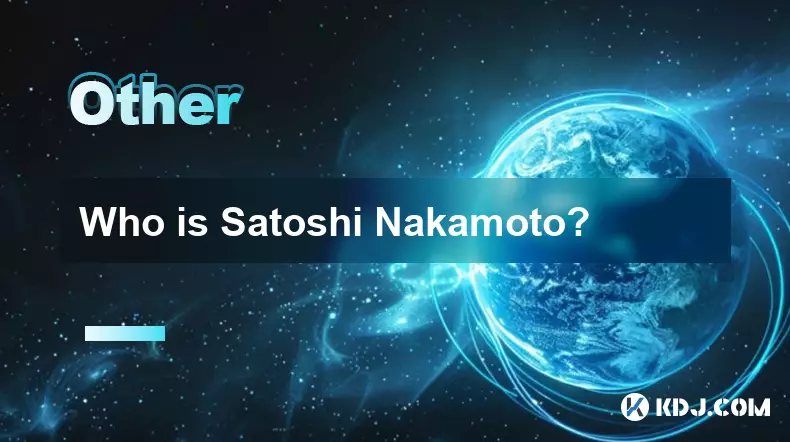
中本聪是谁?
2025-10-15 13:01:02
中本聪是谁? 1. 中本聪是创建第一个去中心化加密货币 Bitcoin 的匿名个人或团体。该名称出现在 2008 年题为“Bitcoin:点对点电子现金系统”的白皮书中,概述了一种无需依赖中央机构即可进行金融交易的革命性方法。 2. 尽管进行了广泛的研究和猜测,中本聪的真实身份仍然未知。许多人被建议...
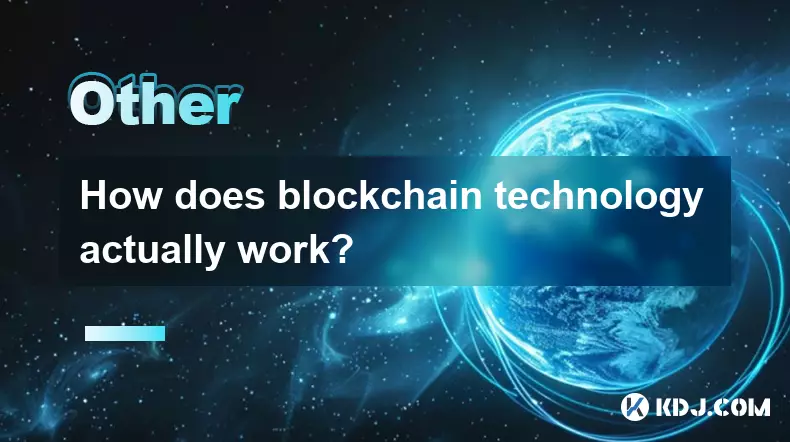
区块链技术实际上是如何运作的?
2025-10-11 14:36:32
了解区块链核心机制1. 从本质上讲,区块链是一种去中心化的数字分类账,它记录多台计算机上的交易,并且已注册的交易无法追溯更改。这确保了透明度和安全性,而不需要中央机构。 2. 链中的每个区块都包含交易列表、时间戳和前一个区块的加密哈希值。该哈希将每个块与其之前的块连接起来,形成一条连续的链。如果有人...

什么是代币经济?
2025-09-20 00:18:29
了解代币经济的基础1。在加密货币背景下的代币经济是指数字代币用作在基于区块链的生态系统中推动特定行为的激励措施的系统。这些令牌通常是在分散网络上构建的,并表示价值,访问或实用程序。 2。代币经济的设计将经济原则与加密协议相结合,以确保参与者为网络增长,安全或治理做出贡献而获得奖励。这包括诸如Stak...

什么是区块浏览器以及如何使用它?
2025-10-24 00:36:24
什么是区块浏览器? 1. 区块浏览器是一种基于网络的工具,允许用户实时查看和分析区块链网络上的数据。它的功能类似于区块链交易、地址、区块和其他链上活动的搜索引擎。 2. 每种主要加密货币,例如 Bitcoin 或以太坊,都有一个或多个专用的区块浏览器,例如 Blockchain.com、Ethers...

区块链网络的“哈希率”是多少?
2025-10-10 15:55:04
了解区块链网络中的哈希率1. 哈希率是指在区块链网络上用于处理交易和挖掘新区块的总计算能力,特别是那些利用工作量证明(PoW)共识机制的网络。它测量在解决验证交易所需的复杂加密难题时,采矿设备或网络每秒可以执行多少计算。 2. 较高的算力表明更多的矿工积极参与网络,贡献他们的计算资源来保护系统。这直...

什么是“创世块”?
2025-10-15 19:55:08
了解加密货币中的创世块创世块是区块链网络中的第一个块。它是构建所有后续块的基础。与常规区块不同,创世区块不引用前一个区块,因为它没有前身。这种独特的特性使其成为整个链条不可改变的起点。创世区块的主要特点1.它被硬编码到大多数区块链系统的软件中,从一开始就确保所有节点的一致性。 2. 创世块的时间戳往...

中本聪是谁?
2025-10-15 13:01:02
中本聪是谁? 1. 中本聪是创建第一个去中心化加密货币 Bitcoin 的匿名个人或团体。该名称出现在 2008 年题为“Bitcoin:点对点电子现金系统”的白皮书中,概述了一种无需依赖中央机构即可进行金融交易的革命性方法。 2. 尽管进行了广泛的研究和猜测,中本聪的真实身份仍然未知。许多人被建议...

区块链技术实际上是如何运作的?
2025-10-11 14:36:32
了解区块链核心机制1. 从本质上讲,区块链是一种去中心化的数字分类账,它记录多台计算机上的交易,并且已注册的交易无法追溯更改。这确保了透明度和安全性,而不需要中央机构。 2. 链中的每个区块都包含交易列表、时间戳和前一个区块的加密哈希值。该哈希将每个块与其之前的块连接起来,形成一条连续的链。如果有人...

什么是代币经济?
2025-09-20 00:18:29
了解代币经济的基础1。在加密货币背景下的代币经济是指数字代币用作在基于区块链的生态系统中推动特定行为的激励措施的系统。这些令牌通常是在分散网络上构建的,并表示价值,访问或实用程序。 2。代币经济的设计将经济原则与加密协议相结合,以确保参与者为网络增长,安全或治理做出贡献而获得奖励。这包括诸如Stak...
查看所有文章





















